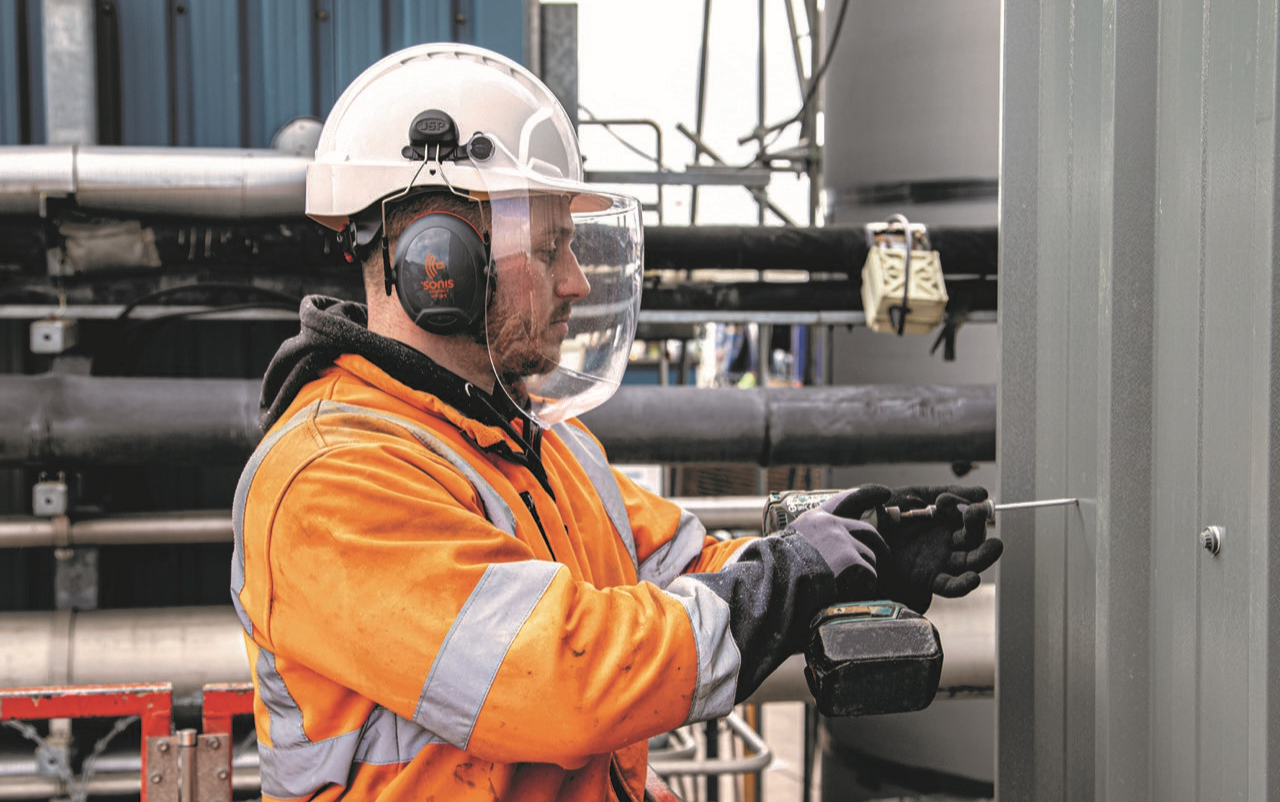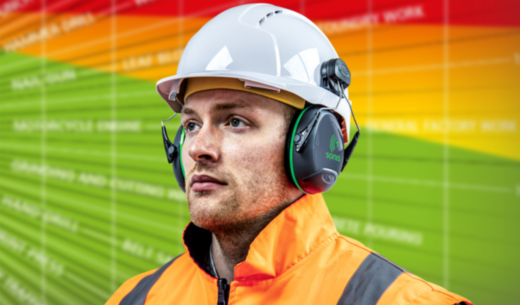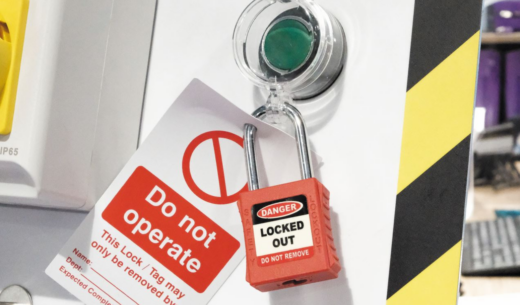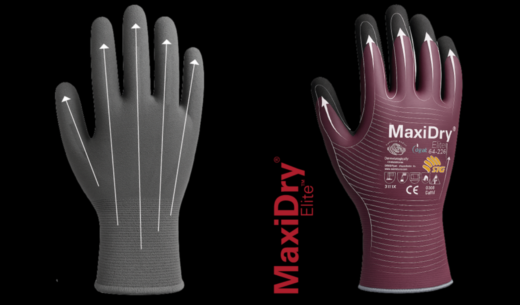Your Ears May be Covered But Are You Protected? A Short Guide to Hearing Protection.
Our hearing is one of our most vital senses. That is why it’s important to protect it. There were an estimated 11,000 cases of hearing problems caused or made worse by work1 during the period of 2019/2022.
Damage to our hearing, caused by noise at work, can contribute to hearing loss now and later in life. Hearing damage can be prevented by following the hierarchy of control which can include the use of suitable personal hearing protection.
What Types of Heading Protection are available?
Personal hearing protection is available in different formats including earmuffs and earplugs. Earmuffs come in a variety of styles; headband versions that can be worn over the head, neckband versions that can be worn around the neck, or earmuffs that can be attached to head protection and or face protection.
When considering using an earmuff attached to either head protection and/or face protection, the combination needs to have undergone full testing and certification together, which is typically done in accordance with the requirements of the harmonised European Standard and UK Designated Standard EN 352-3.
Most safety helmets have a facility, usually an accessory slot at each side, to allow for the fitting of earmuffs and other accessories, such as face shields.
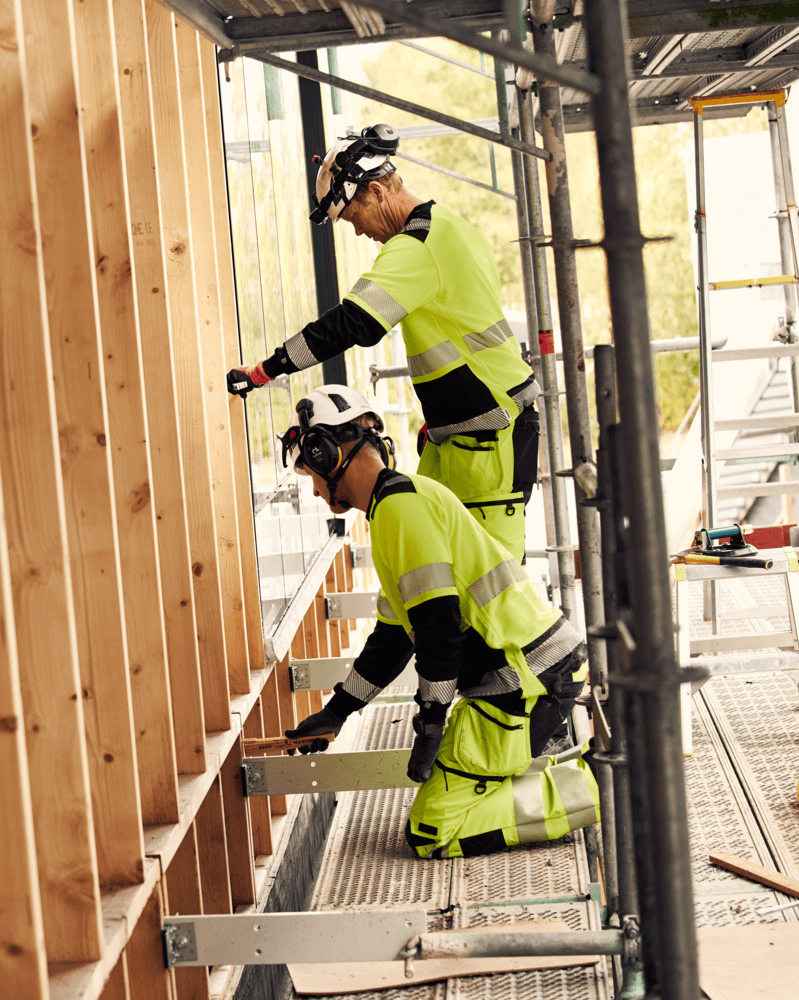
Often the fitting points of the helmet and earmuff are of a ‘standard’ size and style, however, each combination needs to be tested and CE/UKCA approved which is typically achieved against the performance requirement of the European Standard EN 352-3 (or its equivalent designated Standard as applicable in the UK for UKCA approval). Whilst it may be possible to physically attach earmuffs to safety helmets, that does not necessarily mean that the combination of helmet and hearing protectors is approved for use or will perform without the appropriate testing as mentioned above.
The approved combination typically lists the name and model identification of the safety helmet and earmuffs as well as information on sizing and adjustability i.e., small, medium or large size range, this information must be supplied with the product either on packaging or user instructions.
It is perfectly acceptable to obtain a combination approval of specified helmet and earmuffs, where the combined system does not fulfil all three sizing and adjustability requirements including small, medium, and large head sizes as defined in EN 352-3. In that situation, an appropriate warning statement, as detailed in EN 352-3, must be included on the packaging or wearer information accompanying the hearing protector.
To help ensure the earmuffs are correctly fitting the wearer and thus providing adequate protection, it is advised that a fit test is conducted.
Fit Testing
When selected as a control measure, hearing protector performance is critical to help ensure individual protection. There has been an emergence of commercially available systems offering the capability to individually fit test hearing protectors, thereby assessing how much attenuation an individual user is actually receiving.
Hearing protection fit test systems either calculate a Personal Attenuation Rating (PAR) which is an estimate of the noise reduction obtained across test frequencies, in one, or both ears, expressed as a single number or shown as simple pass/fail with full attenuation characteristics. The time needed to conduct fit testing can range from a few seconds to 20 minutes dependant on test method.
Research suggests that users may receive less noise reduction than indicated by the attenuation value(s) on the packaging, due to variation in fit, fitting skill, and motivation of the user. To compensate for any poor fit, the label attenuation values are adjusted by applying a flat 4dB reduction to the overall laboratory data in the UK.

One of the key features determining the performance of earmuffs is the force produced by the spring arm. This is designed to maintain effective seal of the cushion around your ear.
You may have selected the most suitable helmet for you or your workforce, and also the most appropriate earmuff for the noise hazard and the working environment. However, without appropriate testing and approval of the combination system you cannot assume that the earmuff will provide the expected level of protection.
Both the helmet and the earmuffs should be CE and/or UKCA marked. This mark shows that a product meets the necessary regulatory requirements.
There are different ways to gain the CE or UKCA approval mark but the most common is to have a product certified using a harmonised European standard or Designated Standard in the case of UKCA approval. For helmet mounted earmuffs the standard is EN352-3, and it requires products to be tested together and manufacturers to specify the models of helmet tested with the earmuffs.
There are many helmet manufacturers who produce earmuffs for use with their helmets. There are also many manufacturers who specialise in producing one or the other, and distributors will offer a range of both products to give you the best choice.
If you select products from different sources make sure the combined system has been tested and certified against EN 352-3. In addition, it is good practice to perform Fit Testing of combination system.
Manufacturers are well aware of the situation and many co-operate to have their products tested together, so that the customer can select the combination they prefer as the most appropriate.
So, if you want to use an earmuff with a particular helmet, make sure they have been certified together. Remember, your ears may be covered but are you protected?
CE/UKCA Marking and Product Certification
It is a legal requirement that any item of Personal Protective Equipment (PPE) offered for sale within the EU carries the CE mark or UKCA/CE if sold in Great Britain. This mark can be applied if the PPE can be shown to comply with all applicable Essential Health and Safety Requirements (EHSRs) of the PPE Regulation 2016/425. One of those EHSRs requires different types of PPE to be compatible if they are worn together, so that the fit and/or function of one type is not affected by using or wearing the other, but this only refers to different types made by the same manufacturer.
Manufacturers can choose to have products tested for performance requirement to a harmonised EN Standard, and certification using that standard also carries a presumption of conformity with the EHSRs of the PPE Regulation, so they can be CE/UKCA marked. Certification using an EN Standard is therefore the most common route for PPE to gain the CE/UKCA mark. There is a suite of EN Standards for Hearing Protection covered under EN 352 heading and includes parts 1 to 10 for all types of products including passive and electronics. There are three performance requirement standards that include EN 352-1 for performance requirements of headband or neckband earmuffs, EN 352-2 for performance requirements of earplugs and EN 352-3 for performance requirement of earmuffs attached to safety helmets or rigid headtops of powered and supplied air respirator systems.

Under PPE Regulation (EU) 2016/425 ALL hearing protection products used against harmful noise have been elevated into the highest risk Category, alongside respiratory and fall protection, Category III. All Category III products are subject to ongoing annual independent quality assurance by either production sample testing or assessment of the manufacturer’s quality system. This helps ensure that product performance is maintained and remains consistent.
Lyreco
Hearing Protection
Our range of Hearing Protection products includes Disposable Ear Plugs, Reusable Ear Plugs and Ear Defenders covering a plethora of Single Number Rating (SNR) Decibel levels.

References:
1Labour Force Survey

